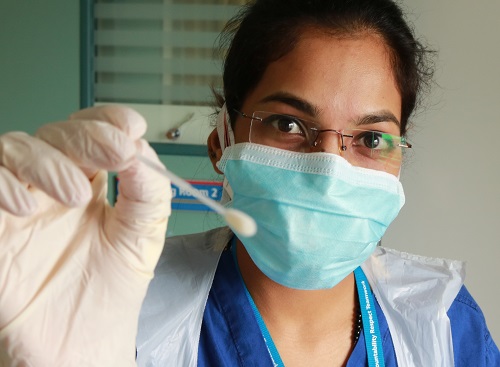New Data Reveals Full Extent of Covid-19 Cases in Local Boroughs
Even with 'Pillar 2' figures level at a fraction of that seen in Leicester

July 4, 2020
Newly released government data revealing more than 250 more cases of coronavirus in Hounslow than previously reported is not a “cause for concern”, the borough’s health boss has stressed.
Earlier this week it was revealed the number of Covid-19 cases being reported publicly by Public Health England, was not the full extent of actual figures.
In Hounslow, as of July 1, the national body published data that there had been 788 cases since March, or 291 cases per 100,000 of the population.
However this was based only on ‘Pillar 1’ data, which is made up of positive tests from hospital patients and staff.
‘Pillar 1’ figures made up most of the cases at the beginning of the crisis but now ‘Pillar 2’ data – which is positive tests for coronavirus from within the community and general public – has made up most of the cases since mid-May.
For the first time on July 2, Public Health England published the number of cases, including Pillar 2 data, showing there were actually 1,053 cases in Hounslow, a rate of 388.9 per 100,000 people.
Following a local lockdown being forced in Leicester due to rising cases, concerns were raised local councils were not aware of the full extent of cases in their boroughs.
But Candice Atterton, Hounslow’s health and social care chief, said this has not been the case here.
She said, “The Council was already aware, through Public Health England Pillar 1 and 2 data, that there had been 922 confirmed cases of Covid-19 in the borough from February 28 to the end of June. The complete Pillar 2 data received yesterday shows there were an additional 133 cases, making the total 1,055,” she said.
“These extra cases, which were recorded over several months, are not a cause for concern for how coronavirus is currently being managed across London, where overall levels remain low and steady.
“Like all London boroughs, we are working closely with Public Health England to monitor new cases. We have a robust outbreak control plan in place and are able to quickly identify any need for immediate intervention.”
She added: “However, we cannot afford to get complacent. Coronavirus is still out there and lives are still at risk. We must all continue to play our part, follow the rules, protect our vulnerable residents and control the spread,” she said.
In Ealing, the new data revealed a further 305 cases that were not reported publicly, taking the borough’s total cases from 1,243 to 1,548. This saw the rate of cases in the population hike from 363.5 per 100,000 to 452.7 per 100,000.
It is understood Ealing Council has been receiving the Pillar 2 data daily.
Reassuring trade union representatives in a meeting on Tuesday, 30 June, before the data was published, the council’s education boss Yvonne Johnson told members that Ealing was not in “the Leicester league” over rising cases.
Relaying a meeting she had with Ealing’s public health director Wendy Meredith, she said: “Wendy told us last week Leicester had 944 cases and Ealing had seven, so we’re not really in the Leicester league.
“She said ours do look like they’re going up slightly but that’s only because we’re counting it more strictly now, we’re looking at all the testing, tracing people as well and we’re not in the same boat as Leicester at all.”
The local authority is monitoring current infection figures rather than the cumulative figures of total cases issued by PHE publicly.
It is believed the weekly rate for Ealing, of both ‘Pillar 1’ and ‘Pillar 2’ is currently below five per 100,000 – similar to London and the national rate.
This compares to a daily rate of 135 cases per 100,000 people currently seen in Leicester.
London North West University Healthcare NHS Trust, which manages Northwick Park, Ealing and Central Middlesex hospital in Brent and was hit by the brunt of the crisis earlier in the pandemic, also told the Local Democracy Reporting Service that the trust is treating the lowest number of patients in several months which was an “encouraging sign”.
A spokesperson added: “We don’t know if we will see an increase in Covid-19 cases locally, but our clinical teams are working extremely hard to prepare for this eventuality, while also safely offering our patients the routine care they need.
“Among other precautionary measures, we have increased the number of critical care beds we provide. We have introduced rigorous infection control measures which geographically separate patients coming in for routine care from those who need emergency care. We also now require that anyone visiting hospital must wear a face mask and be subject to a routine temperature check.
“Nationally, we know much more about the virus now than we did at the beginning of the pandemic, and this will undoubtedly help us if we do see an increase in the number of Covid-19 cases.”
Related links
|